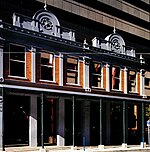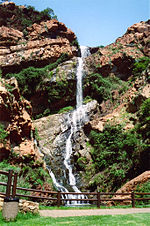Dr Xuma house

Dr. Xuma's house was one of two houses to escape the destruction of Sophiatown, South Africa by the government in the late 1950s, it is also a landmark which belonged to Dr Alfred Bitini Xuma who was a medical doctor and the President of the African National Congress (ANC) and Chairperson of the Western Areas Anti-Expropriation and Proper Housing Committee. Construction of the house was completed in 1935 and named Empilweni which roughly translates to "the place of life". Xuma and his second wife Madie Hall Xuma lived there until his own property was expropriated when Sophiatown was declared a White area in terms of the Native Resettlement Act of 1954, and he had vacated it by 1957.
Excerpt from the Wikipedia article Dr Xuma house (License: CC BY-SA 3.0, Authors, Images).Dr Xuma house
Rissik Street, Johannesburg Newtown
Geographical coordinates (GPS) Address Nearby Places Show on map
Geographical coordinates (GPS)
| Latitude | Longitude |
|---|---|
| N -26.20431 ° | E 28.04225 ° |
Address
Rissik St Post Office
Rissik Street
2001 Johannesburg, Newtown
Gauteng, South Africa
Open on Google Maps










